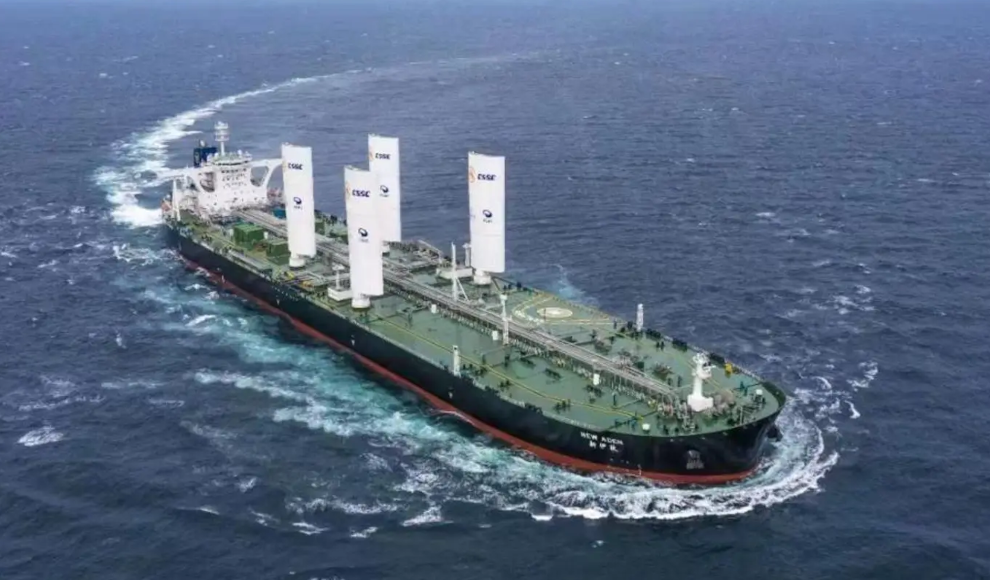The Chinese supertanker New Aden has been launched with four fixed sails made of carbon fiber that significantly reduce fuel consumption. The shipping industry accounts for about two and a half percent of global CO2 emissions. However, the transition to liquefied natural gas (LNG) is slow, and heavy fuel oil and diesel remain the dominant fuels, making it unlikely that emissions will decrease in the coming years. To reduce the enormous fuel consumption of ocean liners, some shipping companies have been working on sails that can support conventional propulsion systems. The China Merchant Energy Shipping Company (CMES) has now put the New Aden supertanker into operation. The 333-meter-long ship, which belongs to the Very Large Crude Carrier (VLCC) class, the second-largest class of tankers, will shuttle between the oil region in the Middle East and Asia.
In addition to its conventional propulsion system, the New Aden has four 40-meter-high sails installed on the middle part of the deck. These are not traditional fabric sails but fixed and significantly more stable sails made of carbon fiber. According to the China Classification Society (CCS), the so-called aerofoils have a combined sail area of 1,200 square meters, and their orientation is automatically adjusted to the wind conditions. According to the shipping company, the supertanker can save up to 9.8 percent of fuel consumption as a result. In the future, other cargo ships will also be partially powered by sails, including the Swedish company Oceanbird, which plans to equip an auto transporter for 7,000 vehicles with five aerofoils up to 80 meters high. This is expected to reduce CO2 emissions by up to 90 percent.
The use of sails in shipping is a promising approach to reducing greenhouse gas emissions. The New Aden supertanker is a significant step forward in this direction, and other shipping companies are expected to follow suit. The development of more efficient and sustainable propulsion systems is crucial to achieving the goal of reducing global CO2 emissions and mitigating the effects of climate change.










